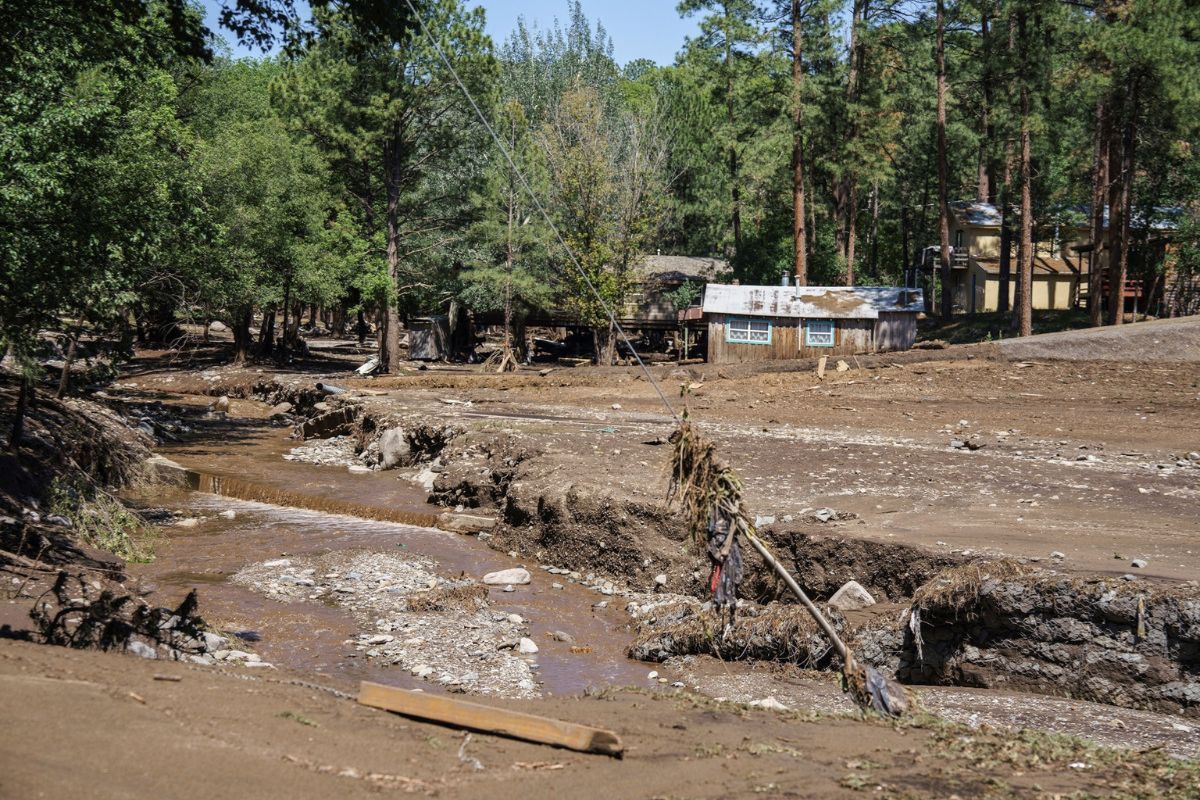
Why does New Mexico experience flooding? New Mexico, known for its arid landscapes and deserts, might seem an unlikely place for flooding. However, flooding in this state is more common than you might think. Monsoon season, typically from June to September, brings heavy rains that can overwhelm dry riverbeds and arroyos, causing flash floods. Additionally, snowmelt from the mountains in spring can lead to rising water levels in rivers and streams. Urban areas with poor drainage systems also contribute to the problem. Understanding these factors helps explain why even a desert state like New Mexico faces significant flooding challenges.
Understanding New Mexico Flooding
Flooding in New Mexico might not be the first thing that comes to mind when thinking about this southwestern state. However, the Land of Enchantment has its own unique challenges when it comes to water. Here are some fascinating facts about New Mexico flooding that might surprise you.
- New Mexico experiences flash floods due to its arid climate and sudden heavy rains.
- The state’s monsoon season, from June to September, is the peak time for flooding.
- Arroyos, dry creek beds, can quickly fill with water during a storm, creating dangerous conditions.
- Urban areas like Albuquerque are particularly vulnerable due to impervious surfaces like roads and buildings.
- The Rio Grande, one of the longest rivers in North America, can overflow its banks during heavy rains.
Historical Flood Events
New Mexico has seen its share of significant flood events over the years. These historical floods have shaped the landscape and the way residents prepare for future incidents.
- The 1929 flood in Santa Fe caused extensive damage and led to the construction of flood control measures.
- In 1972, the Albuquerque flood resulted in millions of dollars in damages and prompted improvements in the city’s drainage system.
- The 2006 flood in Hatch, New Mexico, devastated the town, known for its famous chili peppers.
- The 2013 flood in Carlsbad forced the evacuation of hundreds of residents and caused widespread property damage.
- In 2019, flash floods in Roswell led to significant agricultural losses and infrastructure damage.
Causes of Flooding
Understanding the causes of flooding in New Mexico can help residents better prepare and respond to these natural disasters.
- Heavy rainfall during monsoon season is the primary cause of flooding.
- Snowmelt from the mountains can contribute to river flooding in the spring.
- Deforestation and wildfires can increase runoff and reduce the land’s ability to absorb water.
- Urbanization leads to more impervious surfaces, which increases runoff and flood risk.
- Climate change is expected to increase the frequency and intensity of extreme weather events, including floods.
Flood Mitigation Efforts
Efforts to mitigate flooding in New Mexico involve a combination of infrastructure improvements, community planning, and public awareness.
- The state has invested in flood control dams and reservoirs to manage water flow.
- Albuquerque has an extensive stormwater drainage system to reduce urban flooding.
- Floodplain mapping helps identify high-risk areas and guide development away from these zones.
- Public education campaigns teach residents how to prepare for and respond to floods.
- The New Mexico Department of Homeland Security and Emergency Management coordinates flood response efforts.
Impact on Communities
Flooding can have a profound impact on New Mexico communities, affecting everything from daily life to long-term economic stability.
- Floods can damage homes, businesses, and infrastructure, leading to costly repairs and rebuilding efforts.
- Agricultural areas can suffer significant crop losses, impacting local economies and food supply.
- Floodwaters can contaminate drinking water sources, posing health risks to residents.
- Displacement of residents due to flooding can lead to temporary housing shortages and increased stress on social services.
- Flooding can disrupt transportation networks, making it difficult for emergency services to reach affected areas.
Flooding in New Mexico is a complex issue influenced by natural and human factors. By understanding the causes, historical events, and mitigation efforts, residents can better prepare for and respond to these challenges.
Final Thoughts on New Mexico Flooding
New Mexico's flooding history is a mix of natural beauty and challenges. The state's unique geography, with its mountains, deserts, and rivers, plays a big role in how floods occur. Monsoon season, from June to September, brings heavy rains that can quickly turn dry riverbeds into raging torrents. Flash floods are common, especially in areas with little vegetation to absorb the water.
Floods have shaped the landscape and impacted communities. They can cause significant damage to homes, roads, and infrastructure. However, they also replenish groundwater supplies and support local ecosystems.
Understanding the causes and effects of flooding in New Mexico helps residents prepare and respond effectively. Awareness and preparedness are key to minimizing risks and protecting lives and property. Stay informed, stay safe, and appreciate the power and beauty of nature in the Land of Enchantment.
Was this page helpful?
Our commitment to delivering trustworthy and engaging content is at the heart of what we do. Each fact on our site is contributed by real users like you, bringing a wealth of diverse insights and information. To ensure the highest standards of accuracy and reliability, our dedicated editors meticulously review each submission. This process guarantees that the facts we share are not only fascinating but also credible. Trust in our commitment to quality and authenticity as you explore and learn with us.
